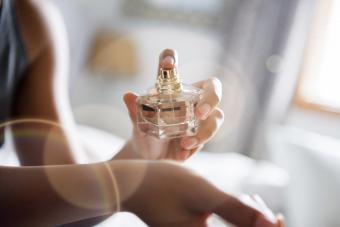
Permanent makeup is new technique on the market. It may be referred to as micropigmentation, micropigment implantation or dermagraphics. Its effects last for years and are primarily used to enhance the looks or features of the wearer.
Defining Permanent Makeup
An art form of cosmetic tattooing, this technique deposits tiny individual implants of specially formulated and hypoallergenic color pigment into the dermal layer of the skin. The pigment is designed to stay in the skin for a few years, though it does fade with time by varying degrees. The equipment used includes the traditional (or specialized) tattoo or coil machines, the pen or rotary machine and the non-machine or hand method.
Types of Permanent Makeup
There are four basic types of permanent makeup, which can be used alone or in together to create a variety of personalized effects. These include:
- Lip Color: This includes both tinting and lip liners, as well as changing the appearance of the lip line.
- Eye Liner: Permanent eye liner can be an option for those who are allergic to standard eye liners and cosmetics.
- Eyebrow Filling: Eyebrow filling is used to fill in thin or sparse eyebrows with a darker, more natural appearance. Filling in the eyebrows can dramatically change the look of the face.
- Reconstructive: Permanent makeup can be used to cover over scars or skin discolorations, helping them blend in with the rest of your natural skin tone.
Common Questions About the Procedure
Choosing this type of cosmetic enhancement is a big decision, and many people have questions. It's important to consider all the factors before you make the decision if it is right for you.
Does It Hurt?
Permanent cosmetics are essentially a tattoo, so yes, during application it may be uncomfortable. After the treatment and the healing process, you shouldn't experience any discomfort.
What Happens Afterward?
Areas of the face may redden or swell after the procedure for about twenty-four hours. Ice may be applied, but check with your technician's directions. Initially the pigment often looks like it is fake or painted on, but the pigment will fade over the first couple of days to look more natural. Bruising may occur, but it should be light.
After a lip liner and/or lipstick procedure, your lip skin may peel, and it's very important that you don't pick off the pigment. In addition, lips may be very dry and chapped afterward.
Watch for infection, pain or fever, and contact a doctor immediately if this occurs. In addition, there will be things your technician will ask you to avoid for a time period after the procedure such as soaps, direct sunlight, chlorinated pools and conventional makeup.
Who Shouldn't Have this Procedure?
If you are insulin dependent or have a heart condition, check with your care provider before proceeding. If you are pregnant or breastfeeding, you should also check with your care provider before getting permanent cosmetics.
Candidates
Although anyone can choose to undergo this enhancement, there are some people in particular who make good candidates. These include:
- Women and men who lead busy lives and don't want to bother with makeup every day.
- Women who want to look good in the mornings immediately after waking.
- Men who want feature enhancement without the actual makeup.
- People with allergies, sensitive skin or oily skin who cannot wear traditional makeup.
- Vision and/or motor impaired people who find it difficult to put on makeup.
- Athletes who don't want to deal with makeup running or coming off during competition or activities.
- Chemotherapy patients or others with various conditions who have lost their eyelashes or eyebrows.
- Persons with scar tissue, or post surgery scars.
- Individuals whose skin has lost part of their pigmentation.
- Those with thin, pale or poorly defined lips.
- Adults who want to correct asymmetrical features.
- Women and men who require the recreation of the areola on a breast following re-constructive surgery or a mastectomy.
Potential Complications
Permanent makeup is a form of tattooing, and like any tattoo it carries several side effects and risks that should be considered before undergoing the procedure. These include:
- Risk of infection
- Scarring
- Granulomas or bumps that grow on the skin if the immune system perceives the ink as a foreign body
- Keloid scars (if you are prone to them)
- Allergic reactions to the ink
- Rare, but potential complications during MRI procedures
- Dissatisfaction with the overall results
Keep in mind that like a tattoo, permanent makeup is difficult, costly and potentially painful to remove. If the procedure is done incorrectly or you are unhappy with the results, reversing the procedure may be difficult.
Permanent Cosmetic Training
Find a trained technician for permanent makeup. It is recommended that you find one that belongs to the Society of Permanent Cosmetics Professional and/or the American Academy of Micropigmentation.
Cost
Cost varies, but permanent makeup generally runs from a few hundred dollars to a thousand dollars or more for the initial application, depending on what is being done. One or two touch-ups may be included in the price. Permanent cosmetics do not need to be maintained, costing you less money down the road.
Consider Your Options Carefully
As with any tattoo, consider the choice to get permanent cosmetic enhancement carefully before undergoing any procedure. Use a technician you trust and ask plenty of questions beforehand. Unlike traditional makeup, you can't wipe this away if the results aren't what you expected.







